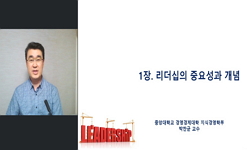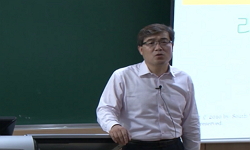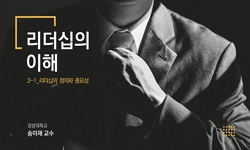This study explores leadership models, which needed for Mongolian children residing in Korea. Educating children while living in a foreign country is Mongolians' main issue, especially those living in Korea. Showing the possibility that the parents co...
http://chineseinput.net/에서 pinyin(병음)방식으로 중국어를 변환할 수 있습니다.
변환된 중국어를 복사하여 사용하시면 됩니다.
- 中文 을 입력하시려면 zhongwen을 입력하시고 space를누르시면됩니다.
- 北京 을 입력하시려면 beijing을 입력하시고 space를 누르시면 됩니다.
DISTANCE LEARNING FOR MONGOLIAN CHILDREN LIVING IN KOREA : ADAPTING AN EDUCATIONAL LEADERSHIP MODEL
한글로보기https://www.riss.kr/link?id=T15745107
- 저자
-
발행사항
용인 : 웨스트민스터신학대학원대학교, 2021
- 학위논문사항
-
발행연도
2021
-
작성언어
영어
- 주제어
-
발행국(도시)
경기도
-
형태사항
91 ; 26 cm
-
일반주기명
지도교수: 김선일(SUNIL KIM)
-
UCI식별코드
I804:11078-200000375202
- 소장기관
-
0
상세조회 -
0
다운로드
부가정보
다국어 초록 (Multilingual Abstract)
This study explores leadership models, which needed for Mongolian children residing in Korea. Educating children while living in a foreign country is Mongolians' main issue, especially those living in Korea. Showing the possibility that the parents could solve the problem that faced them using leadership styles, even they have not majored in this field, is the primary purpose of this project.
The author overviewed various leadership theories to draw appropriate leadership models to educate Mongolian children in a long-distance setting. For decades, leading theories have been the origin of many works. Philosophical foundations of leadership that Great man theory was the first try to define leaders. Then Trait, Contingency, Situational and Behavioral theories, which are made on Great Man's base, created different leadership styles. Eleven different leadership styles were explored in this research, and the author used six styles in the project with a high result.
Using various leadership styles, the author implemented a project, which runs in modern technology based on the latest useful applications. Two teachers were chosen from the city and rural areas of Mongolia mentored the author on working with the six-year-old first-grade student, who is learning in self-study through the distance learning way with leadership styles. All of the programs are in the same process in Mongolia. The student learned how to read and write in the Mongolian language while she is living in Korea.
In the section of the project problem expectation, some changes were made. Instead of choosing other participants from various countries, the author left the chance to be part of this project open for all, who can follow and organize this distance learning action where they are and at the same time with them.
The project's primary role, student Undral is six years old now; even she started the project, she was five years old. Mongolian's language ability is quite good, and fluently even she came to Korea when she was only in her 19 months, the speaking language barrier did not disturb her communication with the teachers. Just actions might change in order to implement the project well. The author needs to use all abilities that she learned during the doctoral courses, incredibly transformational, transactional, and servant leadership styles. Then result will be good effectively.
The Korean education system considers the practice and personal development, making future citizens of Korea human beings. However, the Mongolian education system focuses on more academic knowledge. The difference between both countries' education systems makes some difficulties for foreign children living in Korea. Moreover, some school staff requires that foreign children who do not know the Korean language must enter into below one grade than their same-age children because of the language barrier. If the child will go back after studying for some time, it makes a grade difference in Mongolia.
The next main point is the visa issue. If Mongolian children are illegal, the chance to study at Korean public schools will block by the rule; even there is a right to anti-discrimination. Every child can go to school, a fundamental human right, Convention of the child's rights, education article 28 and 29, and article 23 for children with disabilities, The United Nations (Austin, 2013). If Mongolian children do not know the Korean language or illegally residing, would they have any other choice to study in Korea?
There are three main goals to reach for the results.
The first one is leading parents who are living in foreign countries with their school-age children, especially school starting age 6, with the project, which runs with daily activity and sharing them the materials to work on, what author is collecting from professional teachers and institutions, and the result after working on for self-study in online. Sharing the child's self-study is an excellent example of motivating them, connecting from everywhere in the world.
The second one is to introduce the latest AI technologies for Mongolian teachers and practical online course ways. There are computer programs, mobile apps, TV communications, blogs, eBooks, podcasts, online classes, and AI assistants serving students and instructors to interact, create, distribute, and trade with each other. It is entirely different from conventional education.
The third one is making an example through this experience and letting them know what difficulties face to Mongolia's citizens. To make a sign to pay attention to the population, living away from their home country, and considering their education, creating a modern education institution for them from the state the least one. Even this project is a doctoral degree dissertation activity.
The program for helping the student and same-age children living in foreign countries, based on self-learning with leadership styles, started on 29th October 2019 and ended on 1st June 2020. In this time, the student learned all the alphabets and numbers like Mongolian children living in Mongolia study at their classes during a school year which runs between 1st September and 1st June of the next year. The author trained with the student for 2 hours each day during the week and shared all the learning materials and the student's result on the page for pealing others doing with them.
The author used transformational, transactional, servant, coaching, visionary, and strategic leadership styles in this project. The previous six leadership styles applied to the project well. Nevertheless, autocratic, Laissez-faire, democratic, pacesetting, and bureaucratic leadership styles are not too connected to this project, even included a literature review section of the dissertation.
In this project, five respondents participated as interviewees: the student, two mentoring teachers, the student's father, and the project observer. The goal that used the qualitative research method in this project was to analyze if the distance learning method, managed by adapting leadership styles, is sufficient for the Mongolian child living in Korea.
The desired outcome of the first goal was effective. The project student learned how to read and write in the Mongolian language with the author's leadership styles through distance learning. All the family members of the project student participated in the right role to cooperate for improving her enthusiasm with their daily two hours practice for eight months.
The project revealed the online learning with professional mentoring teachers and parents' cooperation in convenient leadership styles had helped children's native language learning like in their home country. The project was a good starting point and example to encourage other parents and children living abroad for saving the history and culture of the home country.
The second and third ones of the desired outcomes did not yet complete during the project. The project will show a pattern that the government could do or accept a Mongolian first online secondary school for Mongolian children, which gives an official certificate.
목차 (Table of Contents)
- CHAPTER 1 – INTRODUCTION 1
- CHAPTER 2 – FOUNDATIONAL UNDERSTANDING OF LEADERSHIP 7
- 1. The Leadership 7
- 2. Leadership Theories 12
- 1) Great Man Theory2 13
- CHAPTER 1 – INTRODUCTION 1
- CHAPTER 2 – FOUNDATIONAL UNDERSTANDING OF LEADERSHIP 7
- 1. The Leadership 7
- 2. Leadership Theories 12
- 1) Great Man Theory2 13
- 2) Trait Theory 14
- 3) Contingency Theory 14
- 4) Situational Theory 15
- 5) Behavioral Theory 16
- 3. Leadership Styles and Skills 17
- 1) Autocratic Leadership 18
- 2) Laissez-faire Leadership 18
- 3) Democratic Leadership 19
- 4) Pacesetting Leadership 20
- 5) Bureaucratic Leadership 21
- 6) Transactional Leadership 22
- 7) Transformational Leadership 24
- 8) Servant Leadership 25
- 9) Coaching Leadership 27
- 10) Visionary Leadership 29
- 11) Strategic Leadership 30
- CHAPTER 3 – RESEARCH METHODOLOGY 33
- 1. Problem of Project 33
- 2. Context of Project 36
- 3. Models of Leadership in this Project 45
- 1) Transformational Leadership in the Project 45
- 2) Transactional Leadership in the Project 46
- 3) Servant Leadership in the Leadership 49
- 4) Coaching Leadership in the Project 50
- 5) Visionary Leadership in the Project 52
- 6) Strategic Leadership in the Project 53
- 4. Leadership styles not Linked to the Project 55
- 5. Quantitative and Qualitative Research 57
- CHAPTER 4 – IMPLEMENTATION OF RESEARCH 60
- 1. Interviewees 60
- 2. Roles of interviewees 60
- Data 1: Teacher M.J 62
- Data 2: Teacher U.U 64
- Data 3: Student Undral.B 68
- Data 4: Parent B.P 70
- Data 5: Observer D.B 73
- CHAPTER 5 – OUTCOMES 78
- CHAPTER 6 – CONCLUSION. 81
- References 83













